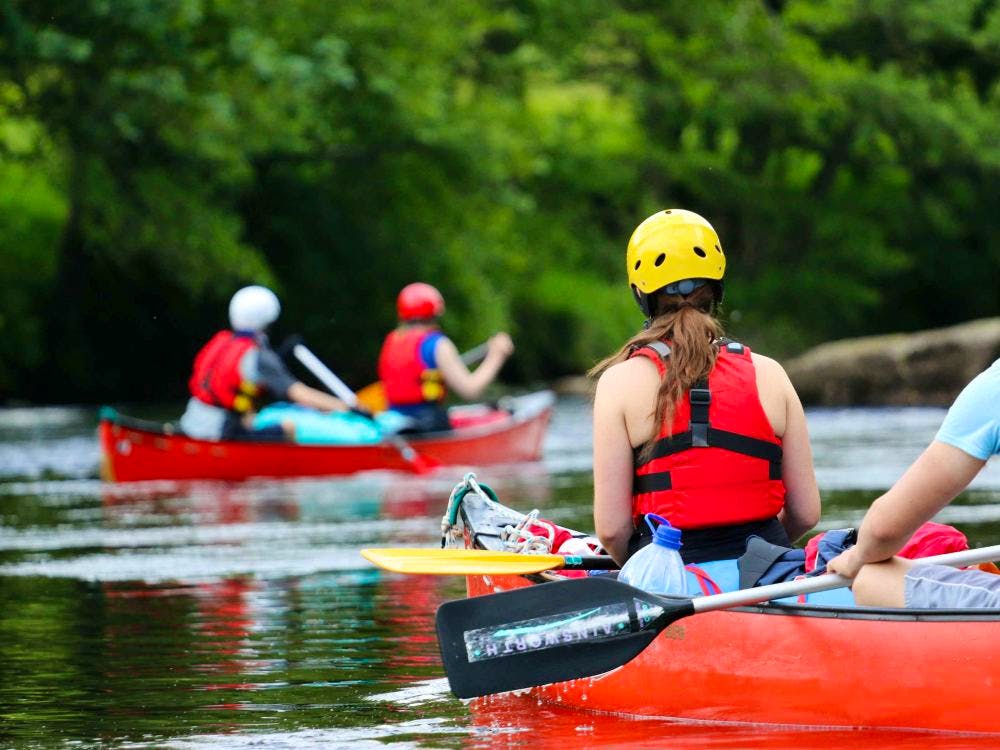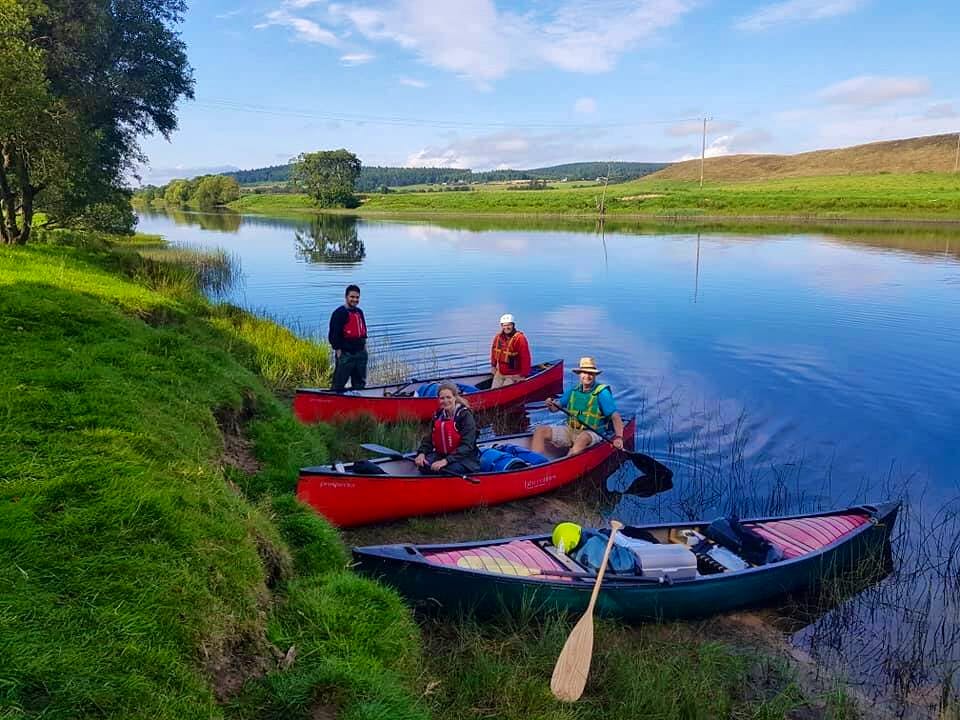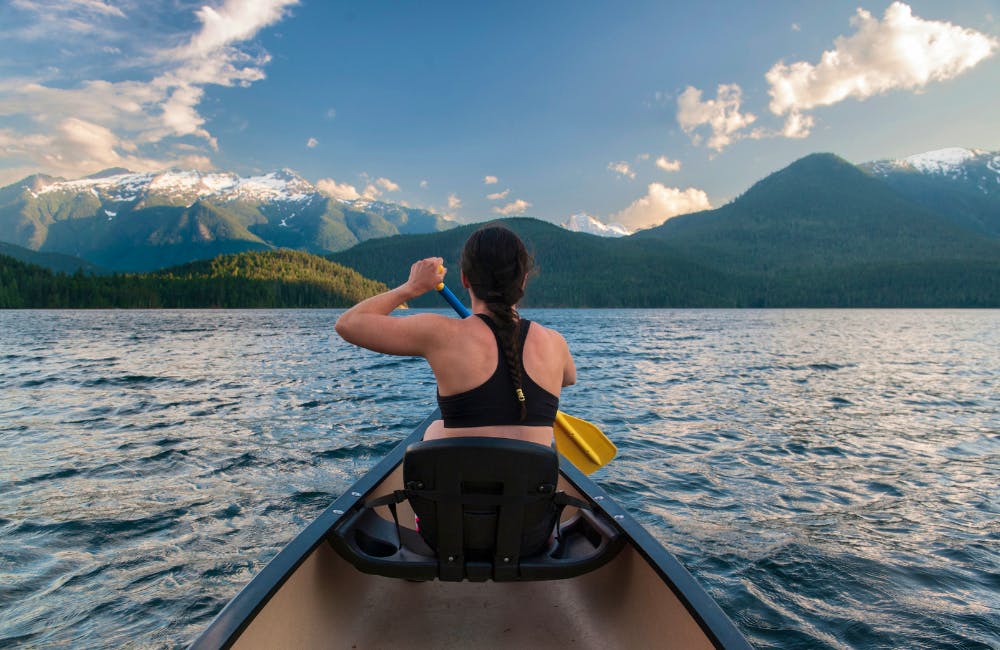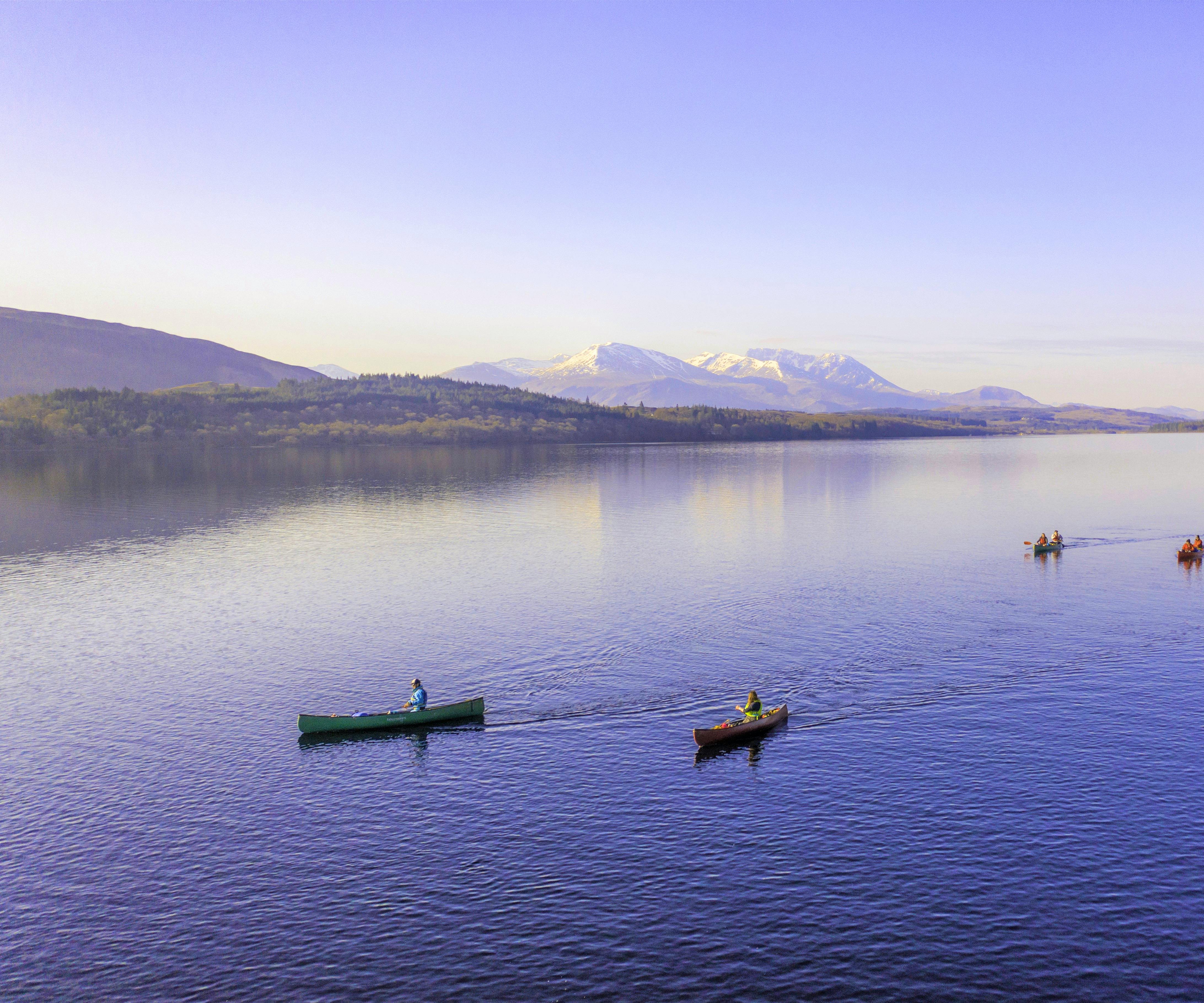What to Wear While Canoeing: A Quick Guide

Why Clothing Matters in Canoeing

What to Wear While Canoeing: 5 Essentials
1. Lightweight Clothing

2. Quick-Dry Athletic T-Shirt
3. Quick-Dry Athletic Shorts or Lightweight Hiking Pants

4. Life Jacket (PFD)
5. Warm and Waterproof Layers


What to Wear While Canoeing: At the Campsite
Flannel shirt or wool shirt: A flannel shirt is cosy and provides warmth for cool evenings. However, flannel can take time to dry if it gets wet. If space is limited, a wool base layer shirt offers the same kind of warmth without the bulk and dries much faster. Wool is naturally moisture-wicking, so it keeps you warm even if it gets a bit damp.
Fleece pants: These are a canoe-tripping luxury that you won’t regret packing. Fleece pants are perfect for lounging around the campsite after you’ve changed out of your wet clothes. They’re also thick enough to provide some protection against mosquito bites.
Pyjamas: Synthetic long underwear and a base layer T-shirt make ideal sleeping attire. They wick moisture away from the body, ensuring you stay warm throughout the night. Avoid cotton as it holds moisture and can leave you feeling clammy.

What to Wear While Canoening: Footwear
Wet shoes: These are the shoes you’ll wear in the canoe. They need to be comfortable, quick-drying, and provide good traction. Trail running shoes or sturdy sandals are good choices. They dry quickly, offer excellent grip on slippery rocks, and protect your feet from debris.
Dry shoes: Once at the campsite, switch into your dry shoes. These should be kept dry throughout the trip, so avoid wearing them in the canoe or wet conditions. Open-toed sandals are a good call.
Wool socks: Wool socks are a must for canoe trips. Unlike cotton, wool retains warmth even when wet and dries much faster. We’d recommend you bring multiple pairs to rotate throughout the trip.

What to Wear While Canoening: Hats & Headgear
Sunhat: A full-brimmed hat offers the best sun protection for your face and neck. Tilley Hats are highly recommended for their durability, waterproofing, and sun protection qualities.
Sunglasses: Polarized sunglasses help reduce glare from the water, preventing eye strain during long paddling days.
Bug jacket or Hat: A bug jacket or hat can be a sanity-saver in areas with heavy insect activity, especially in spring and early summer. These items provide a barrier against mosquitoes and black flies without requiring you to constantly douse yourself in insect repellent.
Helmet (for whitewater paddling): If your trip involves navigating whitewater, a helmet is an essential safety equipment. It protects your head from impacts with rocks or the canoe itself in the event of a capsize.

What to Wear in Cold Weather
Base layer: Start with a moisture-wicking, long-sleeve shirt. Merino wool is the gold standard for cold-weather base layers due to its warmth, breathability, and ability to wick moisture away from the skin. If wool is too pricey, opt for synthetic base layers with similar moisture-wicking properties.
Sweater or jacket: A fleece sweater is a versatile mid-layer that gives you great warmth without adding too much bulk. Pack a down or synthetic down jacket for extra warmth, especially at the campsite. While not ideal for paddling since it doesn’t dry quickly, it offers excellent warmth for cool evenings.
Hiking pants and long underwear: Wear thicker hiking pants treated with DWR for water resistance in cold weather. Layer this with merino wool or synthetic long underwear for added insulation.
Wool hat and gloves: A wool hat or merino wool buff helps retain body heat. Water-resistant gloves are helpful in setting up camp in chilly conditions or paddling on cold, windy days.
Neoprene socks: In icy conditions, consider neoprene socks. They function like a wetsuit for your feet, trapping water and using body heat to keep your feet warm.

Top Tips for Choosing the Right Canoeing Clothing
Pack clothing in a compression sack: Save space by packing your clothes in a compression sack. This also helps keep them dry in case you capsize.
Avoid cotton: Cotton absorbs moisture and dries slowly, leaving you cold and uncomfortable. Stick to synthetic or wool materials that dry quickly and retain warmth even when wet.
Acquire high-quality gear slowly: High-quality outdoor clothing can be an investment. Start with the basics and gradually add to your gear collection as you gain more experience.
Test your clothing system: Before a long trip, test your clothing system on shorter outings to see what works best for you. Adjust as needed to find the perfect balance between warmth, dryness, and comfort.

Summary
Find your next adventure
Why Skyhook?
Join over 27,000 Skyhook adventurers who've used our platform to book directly with our vetted local guides, at local prices (we never markup).
Expert Local Guides
Experienced local guides, handpicked by us.
Best Prices
Never pay a markup on the local guide's price.
Exclusive Club
Earn loyalty rewards every time you travel.
Great Social Vibes
Small group tours provide a richer experience.
Stellar Feedback
Over 2,800 reviews, average of 4.9/5 stars.












